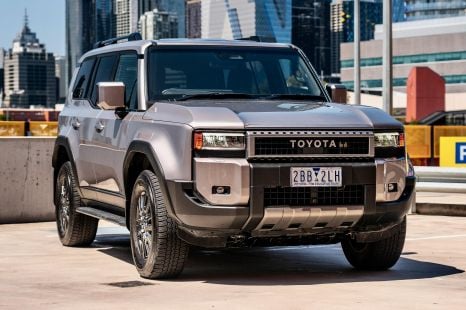

Max Davies
2025 Toyota Prado GXL review
3 Months Ago
It’s big, it’s cheap, and this seven-seat off-road SUV is better than you might expect, especially now the LDV D90 has been upgraded.
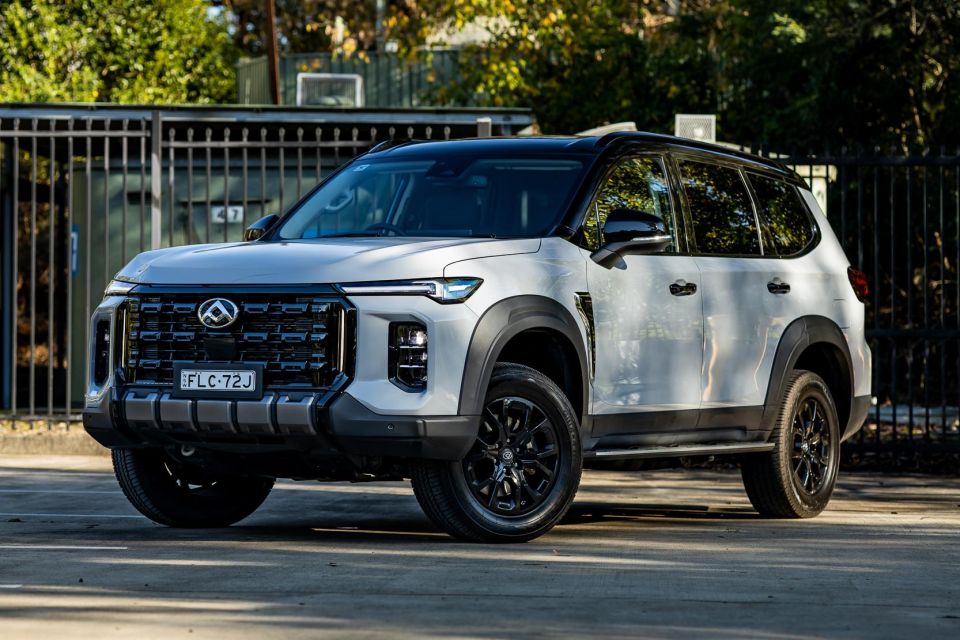
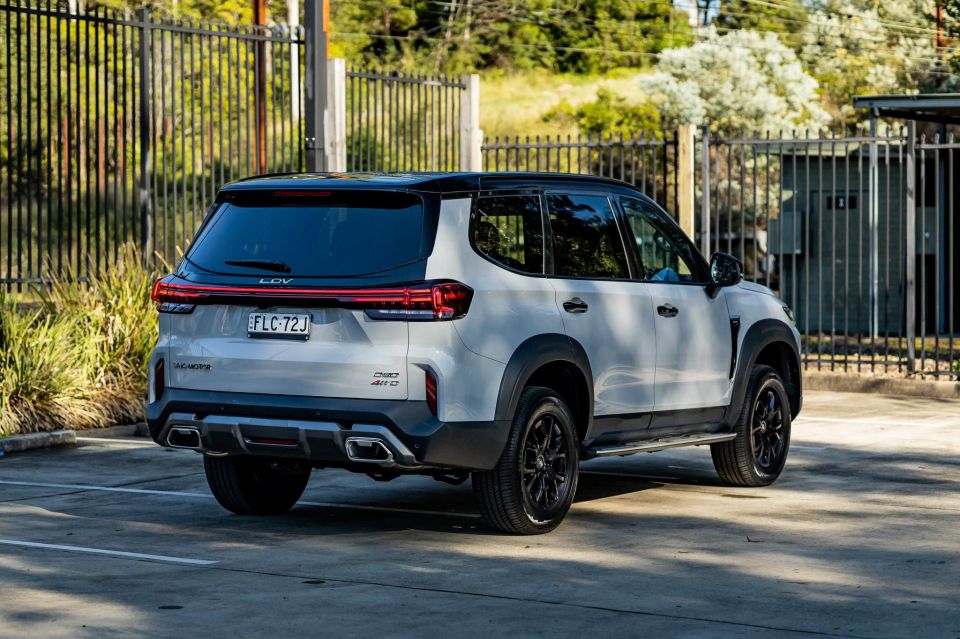

Quickly see how this car stacks up against its competition. Select any benchmark to see more details.
Where expert car reviews meet expert car buying – CarExpert gives you trusted advice, personalised service and real savings on your next new car.
For a long time now the LDV D90 has been a quiet achiever for the Chinese brand.

The large seven-seat off-road SUV has been popular with those looking for a cut-price alternative to models like the Toyota Prado and Ford Everest with a heap of space and spec.
Until recently, it also had a diesel engine on offer – which was popular with private buyers in rural and regional areas in particular.
But this heavily updated model brings a massive redesign and something of a rethink for the model range, with petrol now the only engine choice available to buyers. And prices have been hiked, too.
So is the LDV D90 still worth looking at if you’re in the market for a huge hauler for the fam? Read on to find out.
The LDV D90 is still affordable. And if you happen to have an ABN (Australian Business Number) you might be surprised at the discounts available.
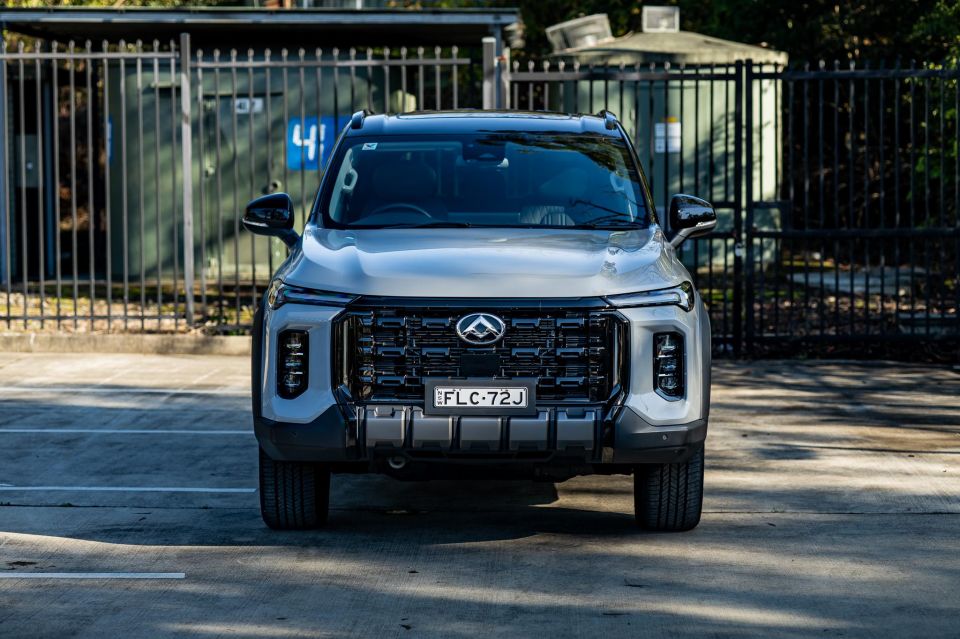
| Model | Drive-away pricing (private buyers) | Drive-away pricing (ABN holders) |
|---|---|---|
| 2025 LDV D90 Mode 2WD | $43,147 | $40,990 |
| 2025 LDV D90 Executive 2WD | $47,358 | $44,990 |
| 2025 LDV D90 Executive 4WD | $51,042 | $48,490 |
The model tested in this review is the flagship Executive 4WD, finished in the premium two-tone Concrete Grey and a black roof ($2000 extra).
All the details about the standard specifications are listed a few sections below.
If you’re curious about how the LDV D90 compares to its rivals, check out our comparison tool
Buy your new car without the stress. It's fast, simple and completely free.

Great service from Travis and team, second time I have used this business would not hesitate to recommend them to anyone
Craig C.
Purchased a Ford Ranger in Sunshine Coast, QLD
CarExpert helped Craig save $7,224 on his Ford Ranger, now let us save you on your next new car.
Get your BEST priceThere have been some big changes inside the D90, as part of a massive cabin redesign that makes it feel a fair bit more upmarket than its predecessor.
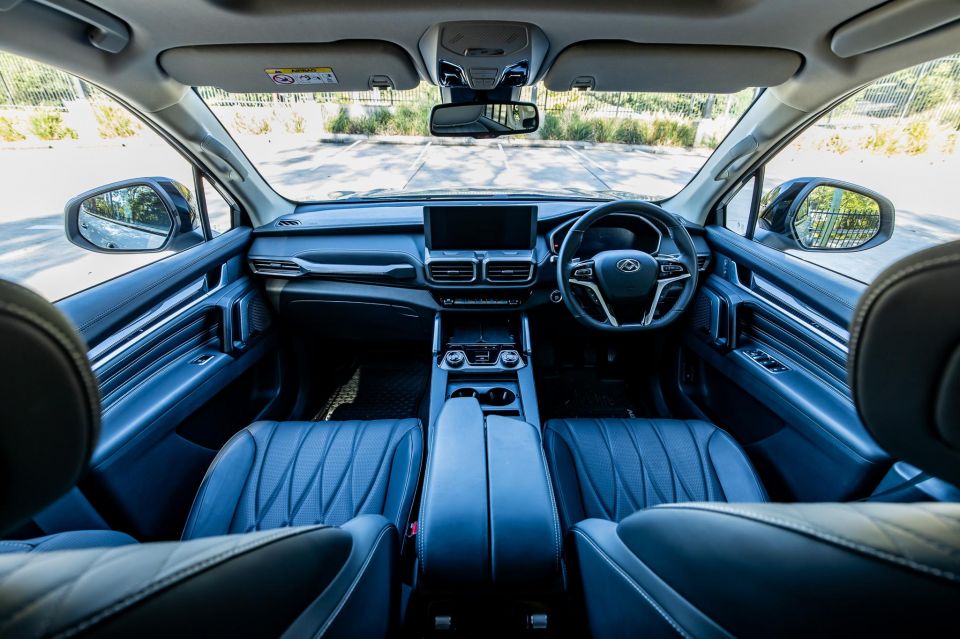
It’s not just the larger and newly-upgraded media screen, nor the better driver info display, but moreover the actual design and styling that looks a whole lot more rugged and ready for family adventures.
There’s a bit of brightwork in the cabin to break up the black trim, including for the passenger side grab handle on the dash, while the new door pulls and redesigned door skins are chunkier as well.
It all looks more purposeful and I really like the new control panel for climate stuff, which still includes toggles for fan and temperature, but is missing a recirculation controller.
However, the new infotainment screen can manage a whole heap of the controls you might otherwise need, including the car’s headlights.
That’s because there’s only high-beam on the left stalk (as well as wiper and blinker controls), and while that might take a bit of getting used to, the ‘auto’ wiper setting on the test vehicle I drove didn’t seem to be working. It also beeps each time you adjust between wiper modes, which – for fiddlers like me – is a frustration.
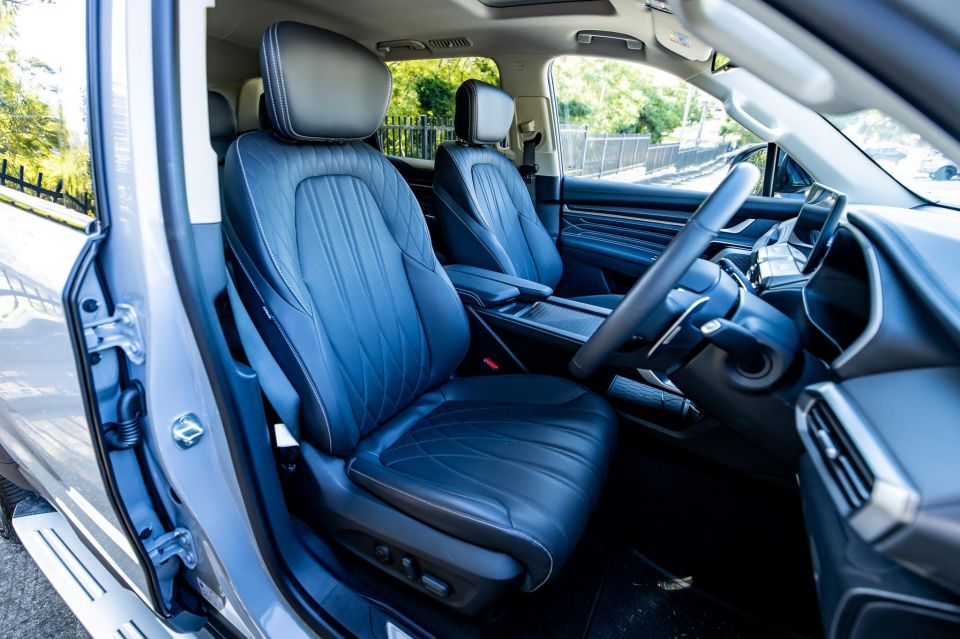
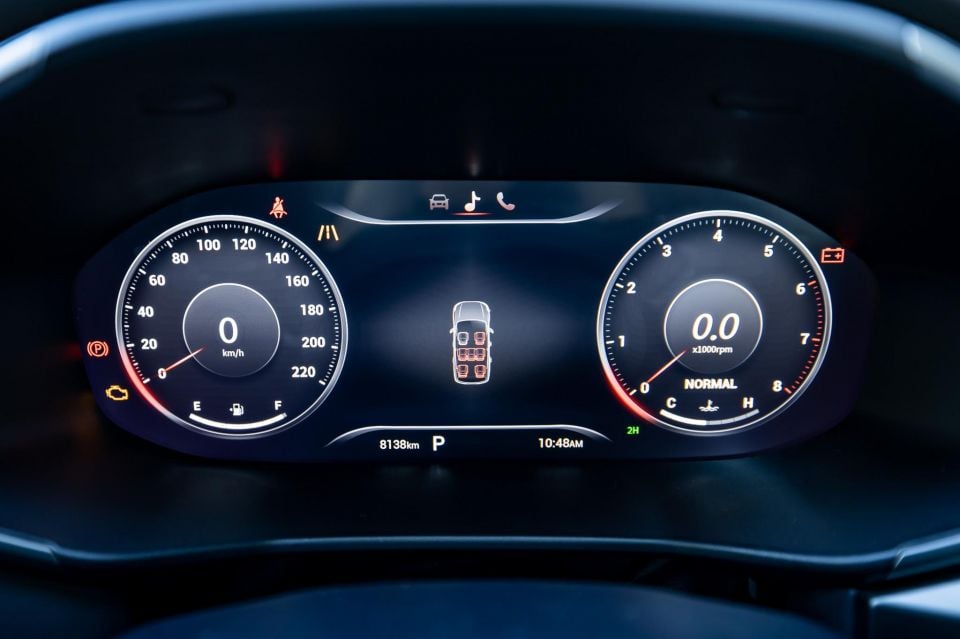
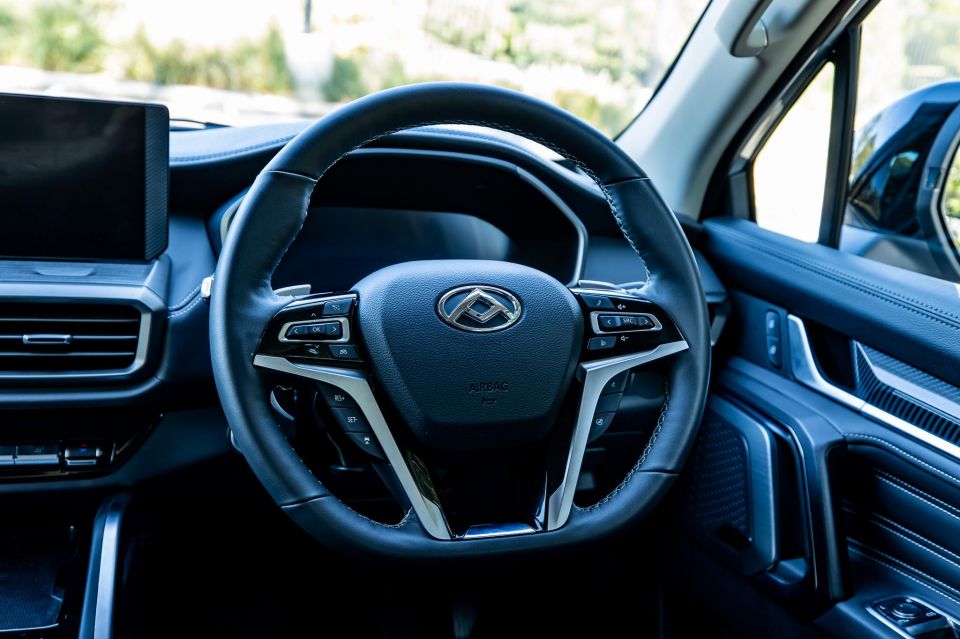
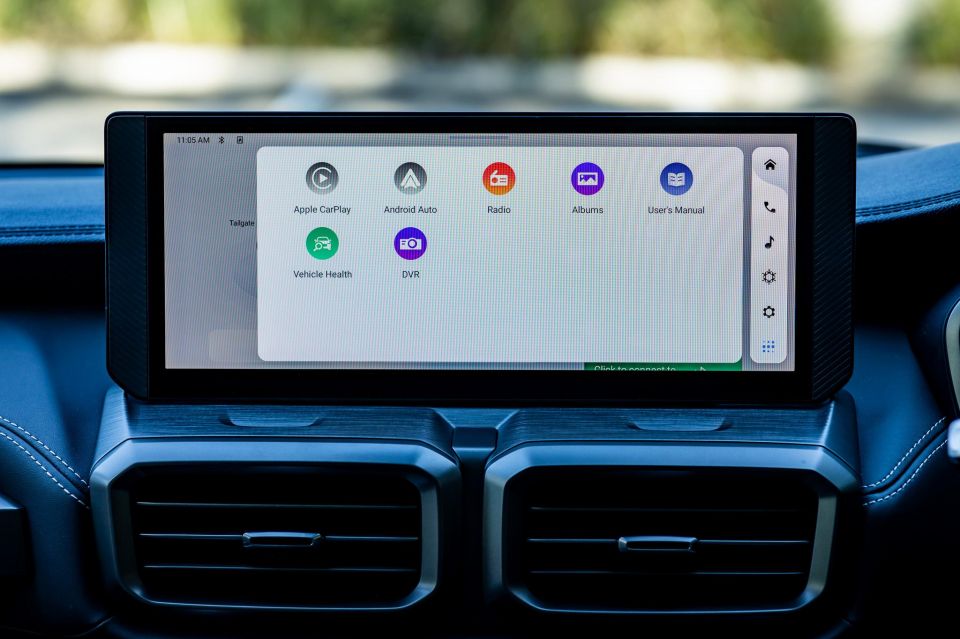
On the other side of the steering wheel is a column-mounted gear selector, and between the seats is an electric park button.
Back to the centre screen, where you’ll also be able to adjust some of the crucial controls, use wired Apple CarPlay or Android Auto, or jump through menus there. It’s a fast-loading and colourful display with intuitive menus, and there’s a drop-down menu for some of the quick adjustments you might want to make (like turning off the lane-keeping tech, but hallelujah the speed sign recognition system will stay off if you switch it off!).
Storage is decent, with a sizeable set of bottle holders in the doors, decent cupholders between the seats, a lower hidden storage section with charging ports near the driver’s left leg, and a centre console bin with a split-opening lid.
The seats offer a good amount of comfort and adjustment up front, with the high-spec version getting electric driver’s seat adjustment with lumbar configurability, but no version of this SUV comes with heated or ventilated seats, which is a shame. The front passenger gets manually adjustable seating.
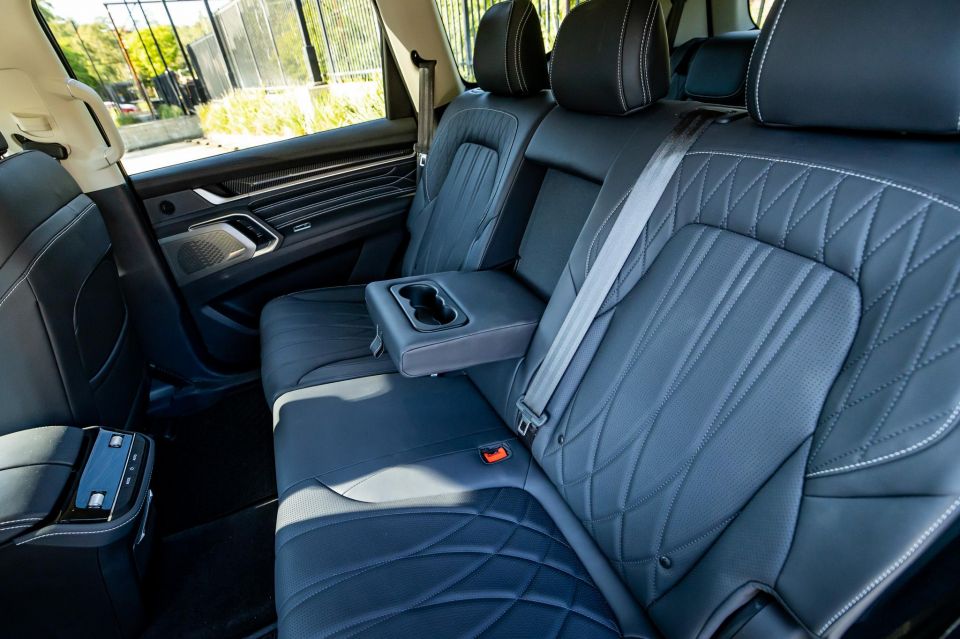
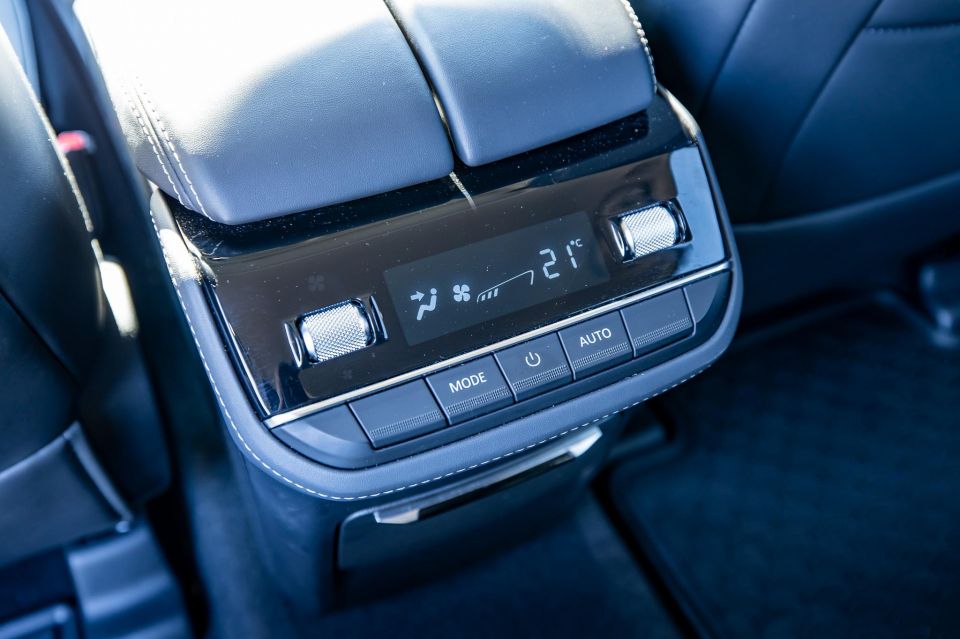
In the second row there is easily enough space for a 182cm/6’0” adult to sit behind a similarl -sized grown-up, partly because the second-row has a sliding function with a 60:40 split. That makes it more amenable than some other rugged SUVs that don’t have sliding seats, like the Isuzu MU-X. There is also a heap of headroom, and three adults across the second row should be doable.
If you need to put kiddos in the back, though, they’ll have to sit in the second row. It has ISOFIX anchors in the window seats and three top-tethers, but the third row has no child seat fitment options, which is a shame. If you need that, have a look at a three-row Mazda SUV, a Kia Sorento or a Hyundai Santa Fe.
But it has a few great features that will make those in the second-row happy, including a powerpoint with international plug adapter, USB ports, ambient lighting and a climate control system with fan speed and temperature adjustment, and there are overhead vents for rear riders in both back rows.
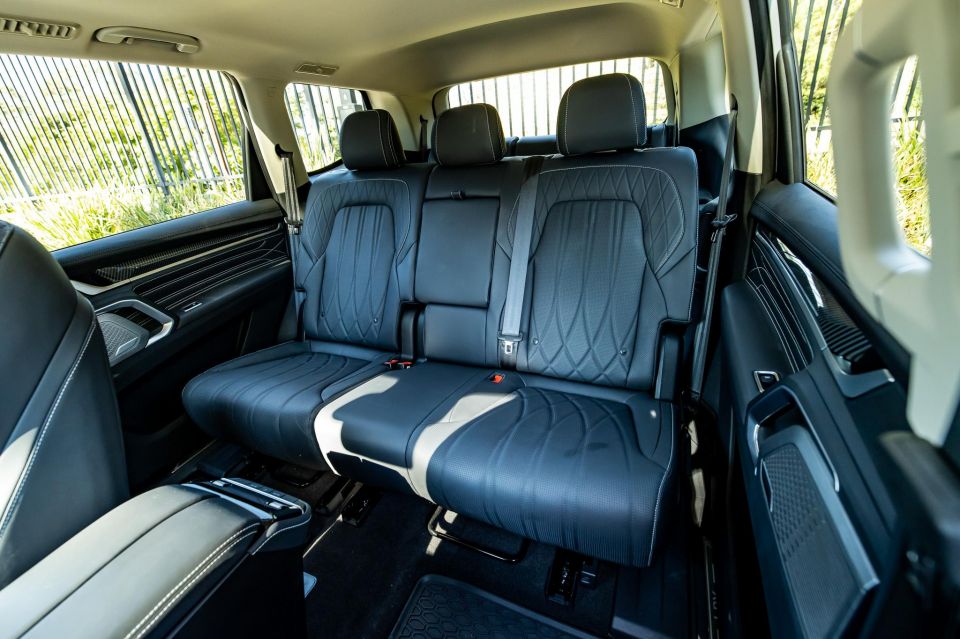
Accessing the back row seats is reasonably easy, but just be careful – the standard side steps are a bit slippery.
The second-row seats can tilt and slide forward to allow access, and the space in the third row is accommodating enough for a fully grown adult to fit with a little bit of knee room (in a very knees-up position), good shoulder room and lots of headroom.
There are some storage options in the very back, and a USB-C charger too.
And as for boot space, there’s a heap on offer.
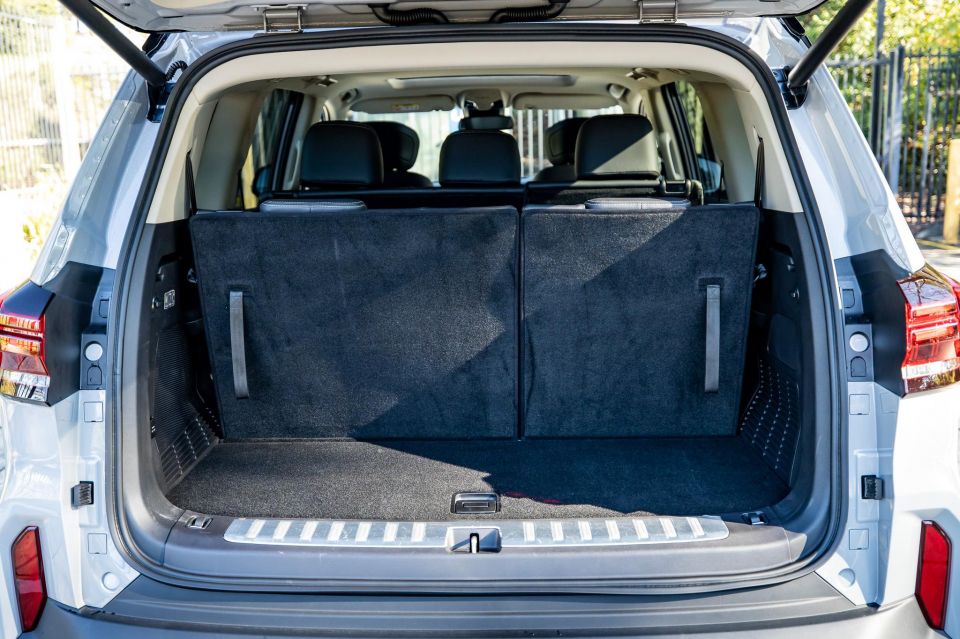
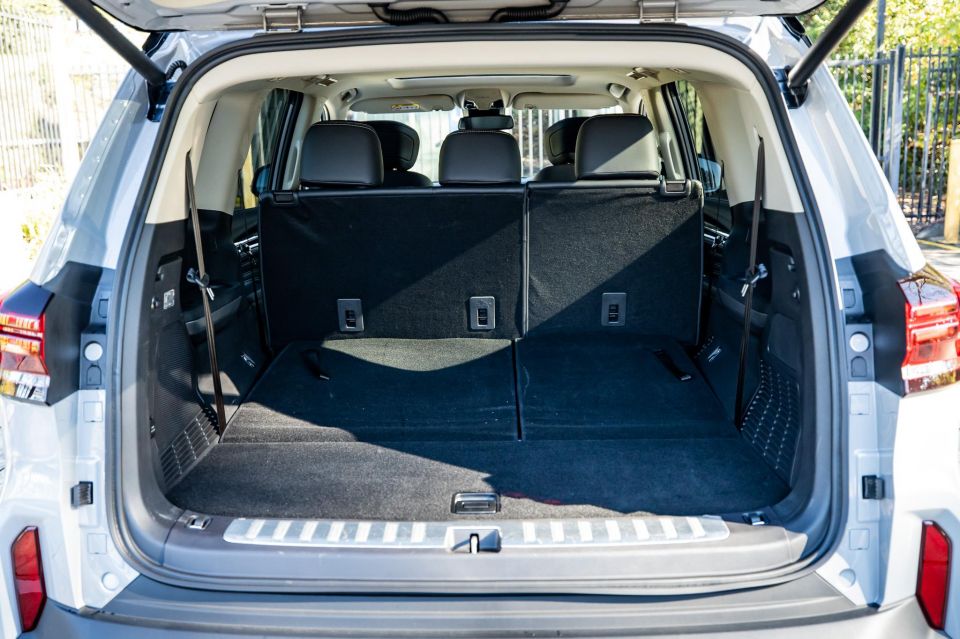
With the third row in place, LDV claims 343 litres of cargo capacity is available – which is easily enough for a heap of school backpacks.
Drop those third-row seats down and you’ll find a massive 1350L of volume to play with, and you can holster the rear seatbelts out of the way too.
The cargo zone has a 12V outlet, lighting, shopping bag hooks, and a jack under the false floor. And below the body of the vehicle is a steel spare wheel.
| 2025 LDV D90 | |
|---|---|
| Length | 5046mm |
| Width | 2249mm (including mirrors) |
| Height | 1876mm |
| Wheelbase | 2950mm |
| Ground clearance | 246mm |
| Boot space | 343-2382L |
If you’re curious about how the LDV D90 compares to its rivals, check out our comparison tool
The diesel engine option is no more, so now you can only get this big three-row SUV with a turbo-petrol engine. But there’s the choice of rear- or four-wheel drive.
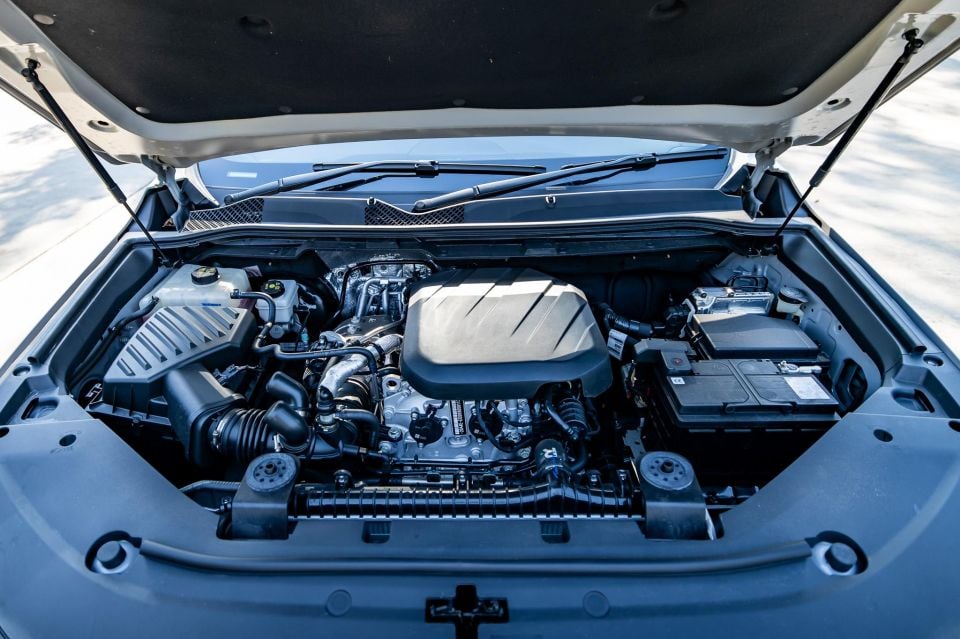
| Specifications | 2025 LDV D90 4WD |
|---|---|
| Engine type | 2.0L turbo-petrol 4cyl |
| Power | 184kW @ 5500rpm |
| Torque | 410Nm @ 2500-3500rpm |
| Transmission | 8-speed auto |
| Drive type | Four-wheel drive |
| Fuel economy (claimed) | 9.4L/100km |
| Fuel economy (as tested) | 11.1L/100km |
| Weight | 2237kg (tare) |
| Fuel tank capacity | 75L |
| Fuel requirement | 95-octane premium unleaded |
| Braked tow capacity | 3000kg |
The 4WD model (as tested here) is certainly going to be an appealing choice for those who go camping or plan to venture into the land of unsealed driving, and while it has a high-range 4WD mode and an Auto mode to apportion torque where it is needed most, in the default 2WD (rear-wheel drive) mode it is a little too easy to rip up the grass or spin the tyres from a standstill.
The official figures are maybe a little ambitious in terms of fuel consumption too. On test, during mainly highway-based testing, I saw a displayed average of 11.1L/100km. But in more urban, traffic-snarl situations, you might see that climb above 14L/100km.
There’s no hybrid option on offer, and it needs premium juice as well.
If you’re curious about how the LDV D90 compares to its rivals, check out our comparison tool
You might be expecting this to be a bit of a lacklustre thing to drive. But it’s not.
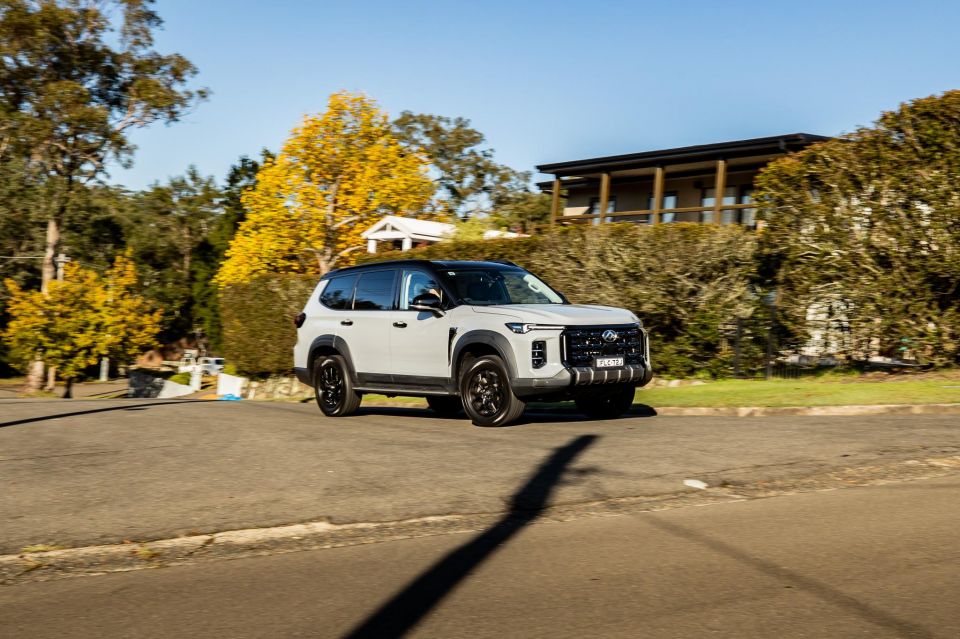
I was surprised at how easily I settled into the drive experience in the petrol D90, having only ever piloted the diesel in years gone by.
And while it’s not perfect – it can feel a bit laggy at low speeds, and it needs to be warmed up a bit as I noticed some chugging when it was cold – it is a perky operator, with a heap of pulling power and an eagerness to rev.
That might be why fuel use is a little on the high side, because the eight-speed auto will shuffle away pretty unobtrusively, though at times I felt it downshifted unnecessarily when it could have just coasted along in the higher gear it was in.
There is a manual mode if you want to take matters into your own hands, but generally – for the sort of stuff I was doing with the car, which is likely similar to what most owners will (driving around town, childcare collection, some commuting and general boring drudgery) – it was decent.

What disappointed me, though, was the brake pedal feel, which feels inconsistent under foot.
I had a few instances of ‘close calls’ because of the brake response not being as bitey as I’d hoped. And look, it’s not the lightest large SUV at2267kg, but the body really heaves forward when you slam the anchors.
That comes down in part to the softness of the suspension, which is impressive in terms of ride comfort.
This SUV easily copes with big and small bumps in the road surface, feeling smooth and cushy across all the usual inconsistencies you might encounter. With 264mm of ground clearance, you can rest assured you’ll be able to tackle kerbs and gutters (and off-road ruts and rocks, too!).
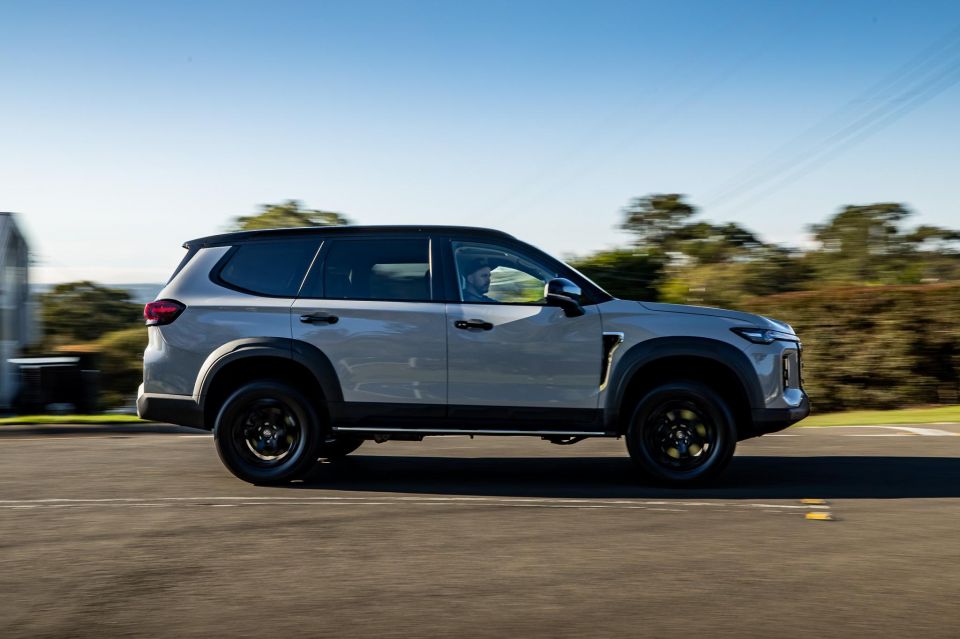
And the steering is pretty easy going, too. It’s not going to feel like you’re at an equal joy level if you’re used to a Ford Everest, but for drivers who just need to shuffle families around and hit the shops, it should be easy to manage.
But there’s an issue. This is a huge SUV, and it’s not the easiest to see out of. And while there is a standard reversing camera and both front and rear parking sensors, that’s really not good enough for a family-focused seven-seater in 2025. It really should have a surround-view system.
If you’re curious about how the LDV D90 compares to its rivals, check out our comparison tool
Here’s a rundown of each variant in the 2025 LDV D90 lineup, and the standard equipment on offer as you walk up through the grades.
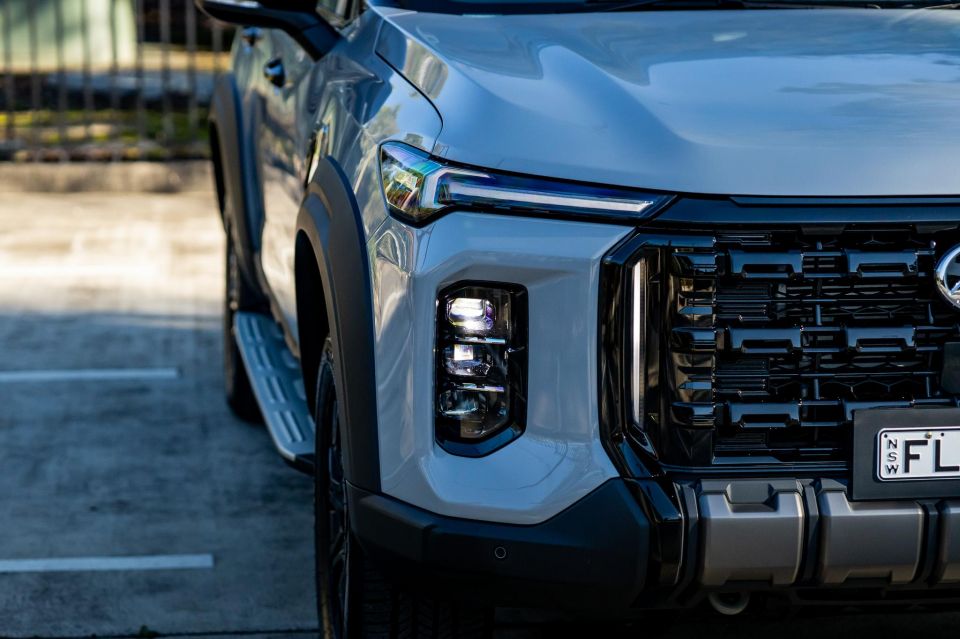

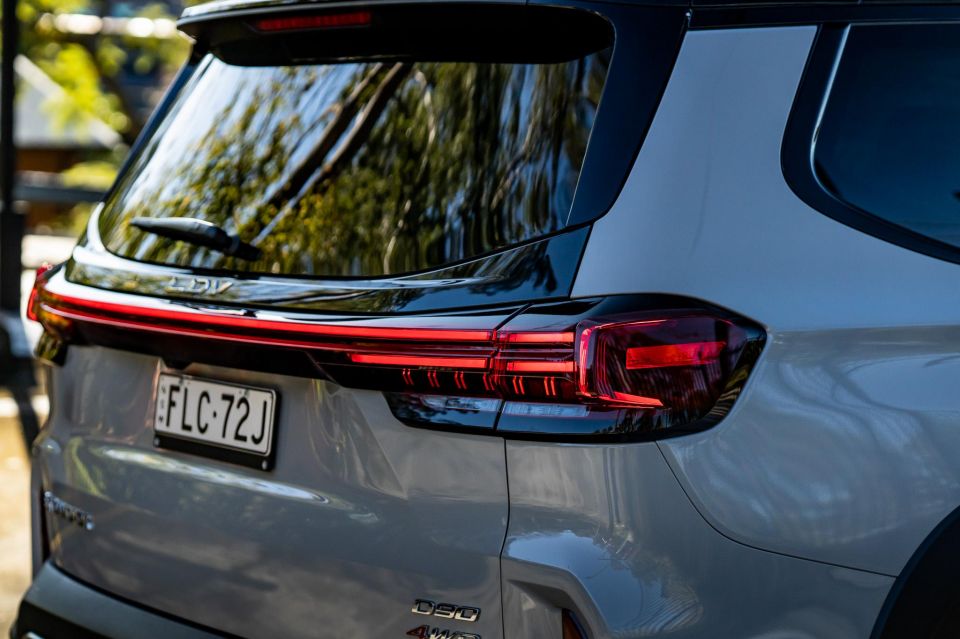
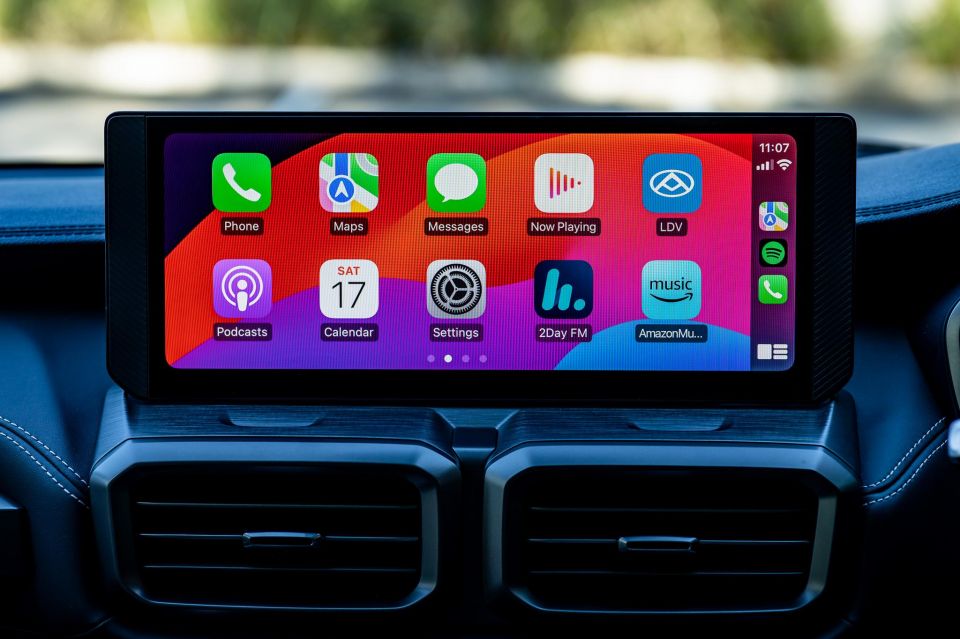
2025 LDV D90 Mode 2WD equipment highlights:
The Executive 2WD adds:
The Executive 4WD adds:
If you’re curious about how the LDV D90 compares to its rivals, check out our comparison tool
The existing LDV D90 had a five-star ANCAP rating, but this upgraded model doesn’t get that. Based on the current criteria, it would not achieve a five-star rating. But does that matter? Have your say in the comments.
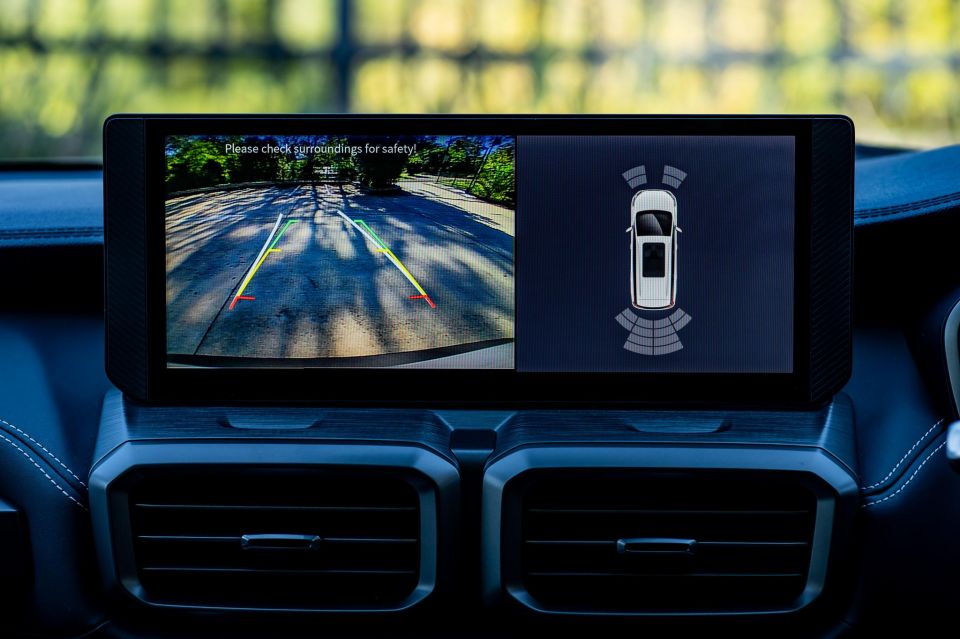
Where expert car reviews meet expert car buying – CarExpert gives you trusted advice, personalised service and real savings on your next new car.
The following safety equipment is standard:
The biggest miss on that list is a surround-view camera system, which should be standard in a car like this – but it isn’t even available in the top-spec car. Disappointing.
What is pretty nifty, though, is the standard fitment of a dash cam system. You can configure the camera to capture rolling footage to an SD card and, if you need to, you can store files to upload them to Dash Cams Australia.
There are six airbags, including dual front, front side and full-length curtain airbags that cover third-row occupants. There’s no front-centre airbag, though.
If you’re curious about how the LDV D90 compares to its rivals, check out our comparison tool
LDV offers a seven-year, 200,000km warranty for the D90, which is on par with most models in the mainstream large SUV segment.
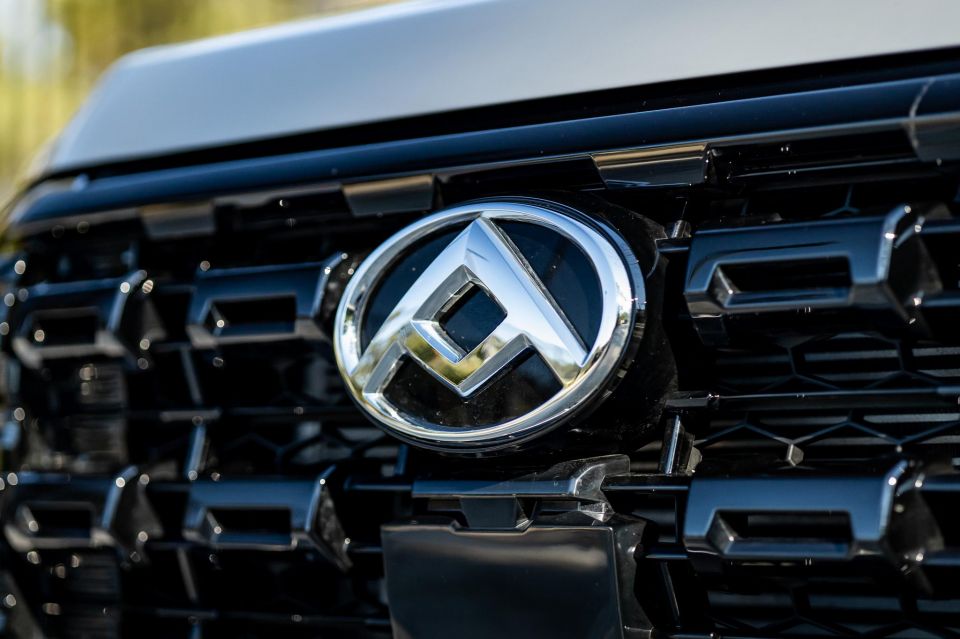
| Servicing and Warranty | LDV D90 |
|---|---|
| Warranty | 7 years, 200,000km |
| Roadside assistance | 5 years |
| Service intervals | 12 months or 10,000km |
| Capped-price servicing | N/A |
Buyers also get five years of roadside assistance if something goes wrong, which is a nice plus.
But there’s a potential issue for some – LDV doesn’t offer any form of capped price servicing for the D90, and that means it lags behind almost all competitors from a peace-of-mind perspective.
However, if you speak with your dealer, they should be able to advise estimates on maintenance costs.
The first service is required at six months or 5000km (whichever comes first), and thereafter all subsequent services are due every 12 months or 10,000km.
If you’re curious about how the LDV D90 compares to its rivals, check out our comparison tool
Buy your new car without the stress. It's fast, simple and completely free.

Great service from Travis and team, second time I have used this business would not hesitate to recommend them to anyone
Craig C.
Purchased a Ford Ranger in Sunshine Coast, QLD
CarExpert helped Craig save $7,224 on his Ford Ranger, now let us save you on your next new car.
Get your BEST priceFamily-friendly and functional, the LDV D90 is worth a look if you’re okay with petrol power and can’t stretch the budget to get into a better diesel-powered, adventure-ready seven-seat SUV like the Everest.
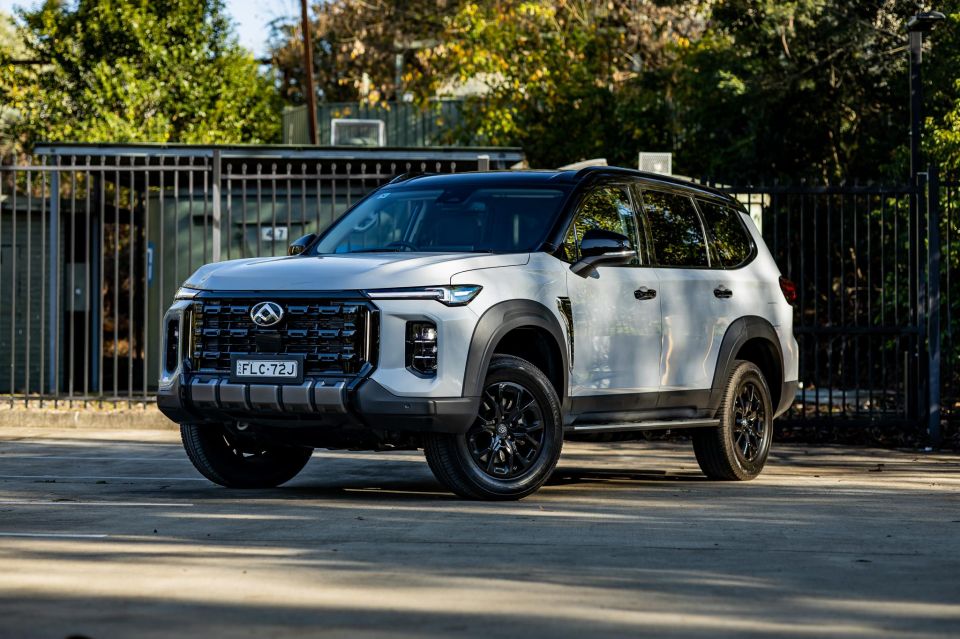
It has a few misses when it comes to tech and driving quality, but for the most part this rugged, high-riding three-row wagon still offers a decent amount of appeal.
Interested in buying an LDV D90? Let CarExpert find you the best deal here
Click the images for the full gallery
Where expert car reviews meet expert car buying – CarExpert gives you trusted advice, personalised service and real savings on your next new car.
Matt has more than a decade of experience in automotive journalism, and loves exploring the pros and cons of new cars, delving into deep-dive industry stories, and going for a drive just for the fun of it.


Max Davies
3 Months Ago
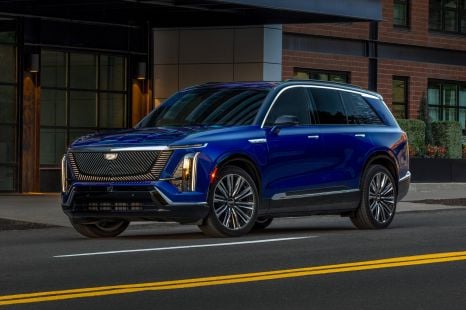

William Stopford
2 Months Ago
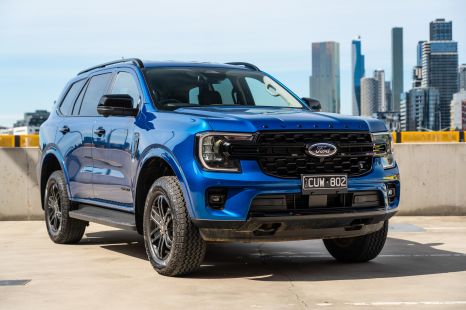

Josh Nevett
2 Months Ago
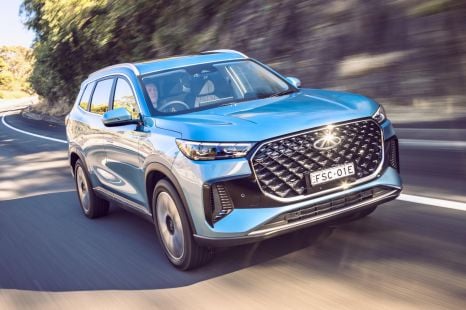

Max Davies
1 Month Ago
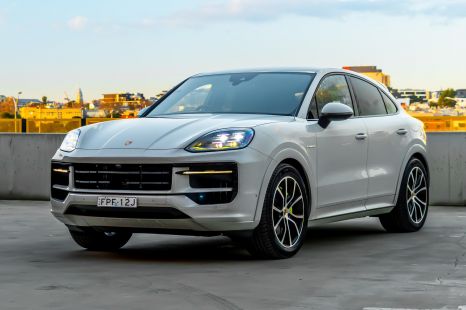

James Wong
25 Days Ago
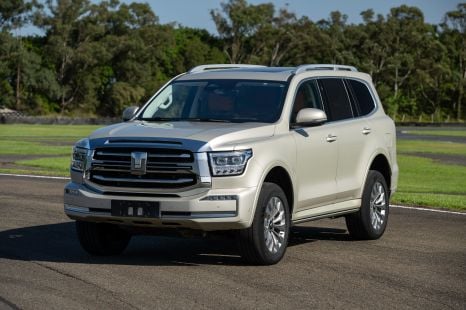

William Stopford
22 Days Ago